Weekly Studio: Julia Lohmann from the Department of Seaweed
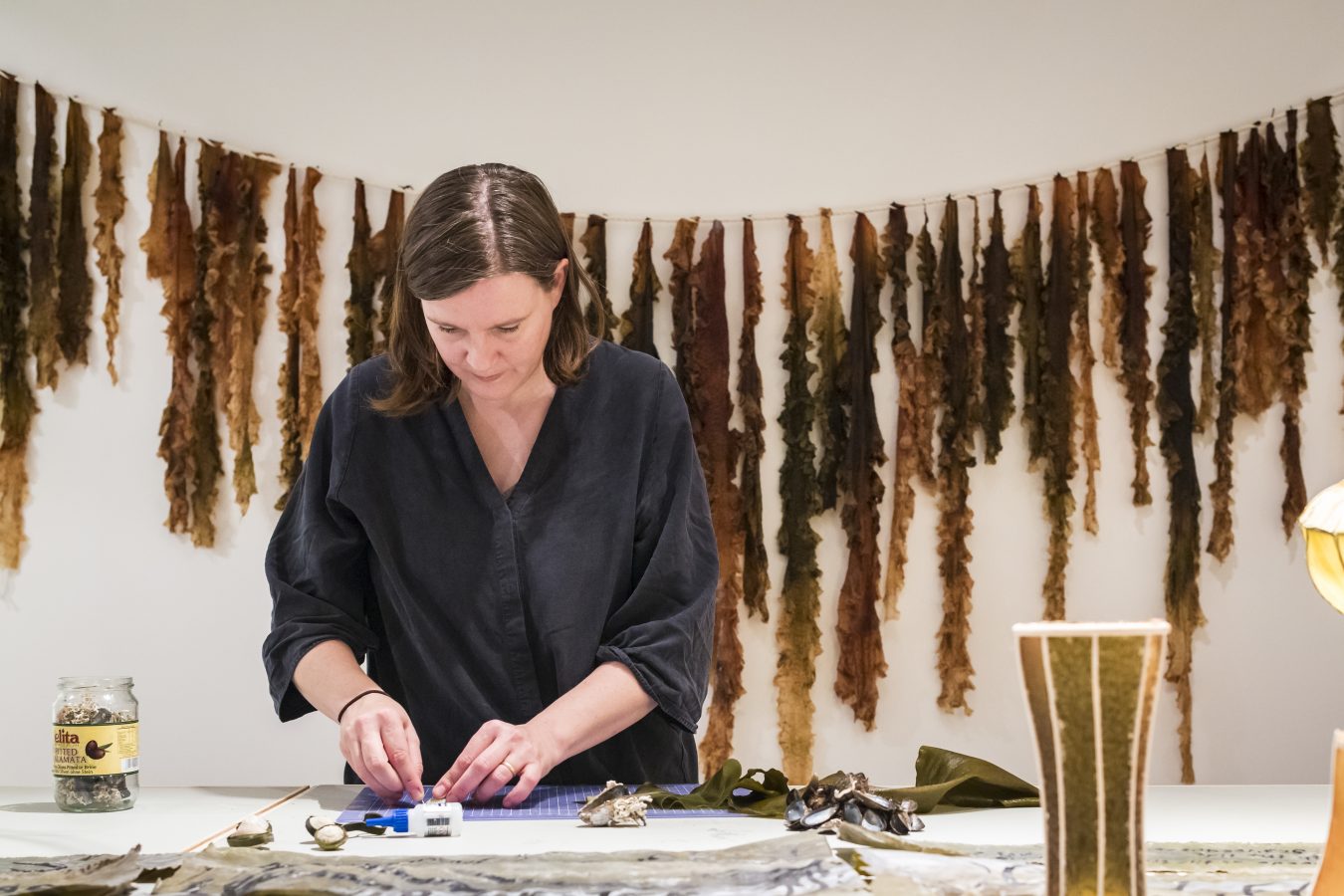
Recently appointed Professor of Practice in Contemporary Design at Aalto University, designer Julia Lohmann speaks about the value of temporarily transplanting her studio to public institutions and why seaweed might be our last chance to make a difference to the environment. Her studio has moved to the Design Museum where the Critical Tide exhibition is still open until the end of this week.
Recently appointed Professor of Practice in Contemporary Design at Aalto University, designer Julia Lohmann speaks to Weekly about the value of temporarily transplanting her studio to public institutions and why seaweed might be our last chance to make a difference to the environment.
Your new exhibition Critical Tide, about the potential for design to positively impact how people think of the sea, opened at the Design Museum during Helsinki Design Week. How did that come about?
We moved to Helsinki a year ago when I was appointed professor at Aalto University. At Aalto, I met Pirjo Haikola who is both a design researcher and a diving instructor. We found out that the Design Museum had an open call for a project on critical design. We started to talk immediately about what we might do and how we could propose an exhibition not only of critical design, but one which uses critical design as a method for engagement. We both share a love for the ocean and that was the connection between our work.

I then called Gillian Russell—who did her PhD at the RCA and V&A the same time I did and who specialises in curating critical design—to ask whether she might be interested in getting involved. In the meantime, Pirjo got appointed at Melbourne, so in the end we curated the exhibition between Helsinki, Vancouver and Melbourne. There were a lot of Skype meetings!
We had a few critical strands to include which came out of our own work. The key line for us was that the minute you deal with the ocean as a designer, you become aware that human-centred design is not enough; there are no human inhabitants in the ocean. And if we take seriously the non-human stakeholders involved in thinking about the ocean, that requires us as designers to work in a very transdisciplinary way. So, we work with other designers, but also marine sciences and ecologists; and we must involve not just knowledge, but deep empathy.
 Another important consideration was that, when dealing with the ocean you have to become aware of what your impact is by becoming ocean literate. For example, in the exhibition there’s a sound piece by Robertina [Šebjanič] where she’s recorded the underwater soundscape to figure out how much noise we’re making. The only reason we make so much noise is because we aren’t aware of it or its impact.
Another important consideration was that, when dealing with the ocean you have to become aware of what your impact is by becoming ocean literate. For example, in the exhibition there’s a sound piece by Robertina [Šebjanič] where she’s recorded the underwater soundscape to figure out how much noise we’re making. The only reason we make so much noise is because we aren’t aware of it or its impact.
Because critical design can often be quite dystopian, imagining future problems etc., although we believe that this is valid and necessary, it’s not the only way you can do critical design. We wanted to show this other side which I call critical practice and which includes every kind of design that challenges the traditional and industrial frame within which design is often conducted.
We wanted to show pieces that give the viewer the impression that there are things people can do. It’s not that we claim there are no problems, but that we provide an antidote to the horrible news we read on a daily basis that says we can’t do anything.
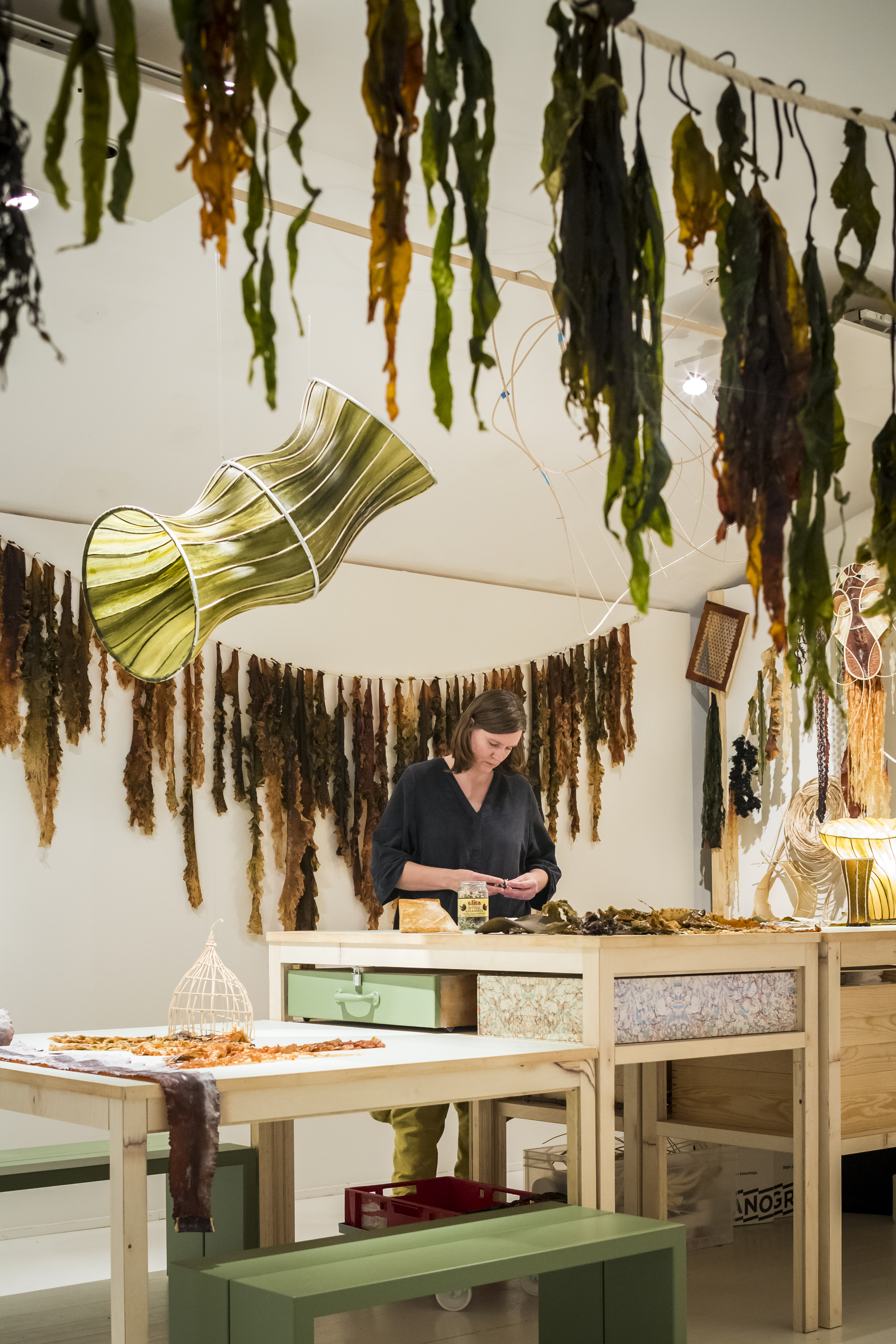 With your Department of Seaweed (DoS) project at the V&A and now the transplanting of the DoS studio to the Design Museum, it seems that direct public interaction and engagement are important parts of your work?
With your Department of Seaweed (DoS) project at the V&A and now the transplanting of the DoS studio to the Design Museum, it seems that direct public interaction and engagement are important parts of your work?
A museum is not just a place to display work, but to test work. For me, I’m most interested in process and by sharing processes in museums I can have a dialogue with people where we co-imagine possible futures. When you are actually in the space, you can see how people react and what ideas they bring to the space and what they might know that you don’t know. You overhear conversations, but you also have direct engagement; you have user-research woven into the process. And when visitors can see that it’s not just a sham that everything is already decided but that their engagement really influences what happens, you encourage a knowledge exchange. It’s really enriching for both sides.
 Given that a lot of your work feels very on the edge of conceptual art rather than critical design, I wonder why you’ve embraced the discipline of design rather than art?
Given that a lot of your work feels very on the edge of conceptual art rather than critical design, I wonder why you’ve embraced the discipline of design rather than art?
It is something I think about, actually. Sometimes I do feel more comfortable in certain art contexts, but then sometimes I feel uncomfortable in both. It really depends.
I have a friend who is an environmental artist and he once said that art stands for freedom and environmental stands for responsibility. I really like that. I suppose for me, although there are art practices that are built on empathy, many are very self-centred. I think with design, empathy should always play a role because you’re designing for an other. That’s something I really want to foreground in my work.
I like that my work is at the boundary of what is accepted as design and that it confuses people when I present the work as design. I like people to challenge themselves. We give so much importance to objects in our lives and objects should do more than just make us comfortable, they should challenge us and that’s something design can help with.
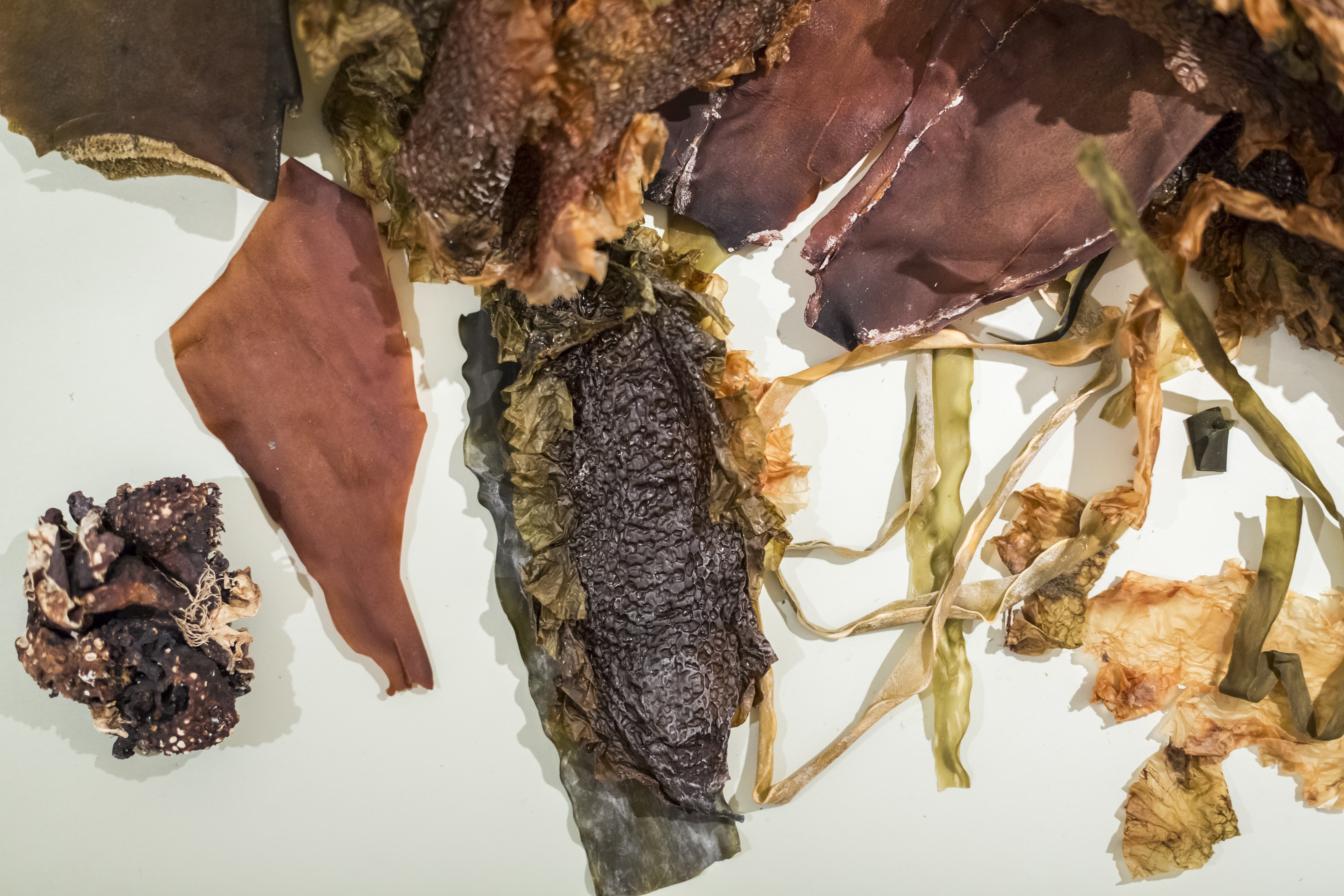 You’ve drawn attention to the fact that a material like seaweed can be just as liable to environmental damage and exploitation if it’s simply seen as a replacement of one material for another given the context of our current industrialised, capitalist system.
You’ve drawn attention to the fact that a material like seaweed can be just as liable to environmental damage and exploitation if it’s simply seen as a replacement of one material for another given the context of our current industrialised, capitalist system.
This is super important because I think seaweed is really a chance for us, but I don’t think we have many chances left. If we go from agriculture to aquaculture with the same mind-set that we have at the moment, we will start building huge industrial farms under the sea, not caring about what goes in and what comes out.
One of the things I find so appealing about the possibilities of seaweed farming is that we have the chance to really make an impact, but also to develop another way of engagement that does less harm and supports an ecosystem rather than running it down. For example, sure you could establish a seaweed farm with the goal of having the biggest financial yields, but you could also have the goal of bringing the biggest benefit to the ecosystem and establish the farm in an area with excess fertiliser and algae bloom because there the seaweed could act as an environmental cleaning agent. And if we can do it with seaweed, maybe we can learn from that mind-set and transfer it back to agriculture via organic farming or other models.
 Do you think that the hype that gets built up around certain materials or products, for example, that seaweed will save the world, does more harm than good?
Do you think that the hype that gets built up around certain materials or products, for example, that seaweed will save the world, does more harm than good?
I think we tend to put too much pressure on people with inspiring ideas. If you think of Boyan Slat, the guy behind Ocean Cleanup; when something has gone wrong with the project, people just write it off. But that’s the nature of developing something new. In industry, all the R&D is done behind closed doors so people don’t see the things going wrong, but kudos to him for developing it and doing it publically.
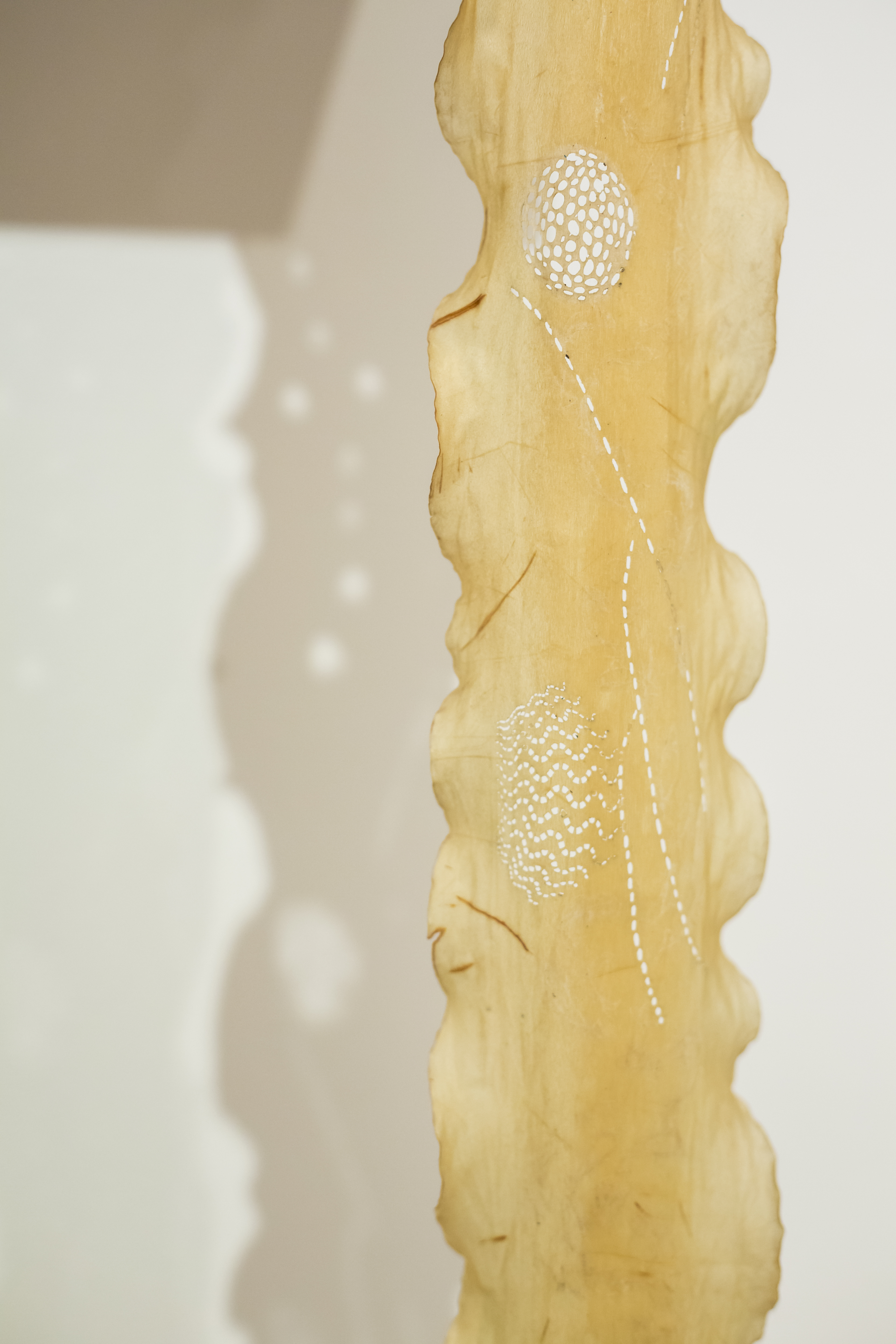 You’ve been working with seaweed as a material for more than 10 years? How has your thinking developed & changed in that time?
You’ve been working with seaweed as a material for more than 10 years? How has your thinking developed & changed in that time?
For me, seaweed has been both a method and a material. It’s a method, because it’s a method of engagement that helps me engage across levels of complexity. Richard Buchanan’s four orders of design moves from signs and symbols to objects to tools and services and interactions. It expands into the macro, but also the micro; not only objects, but materials and microstructures.
As designers today, we have an expanded field of design where we can work across many levels. With seaweed, I’m working on all levels in parallel which is quite slow, but important because they inform each other. If I look at ecological questions, that informs what kinds of material I use because I wouldn’t want to work with plastic on a project with environmental concerns.
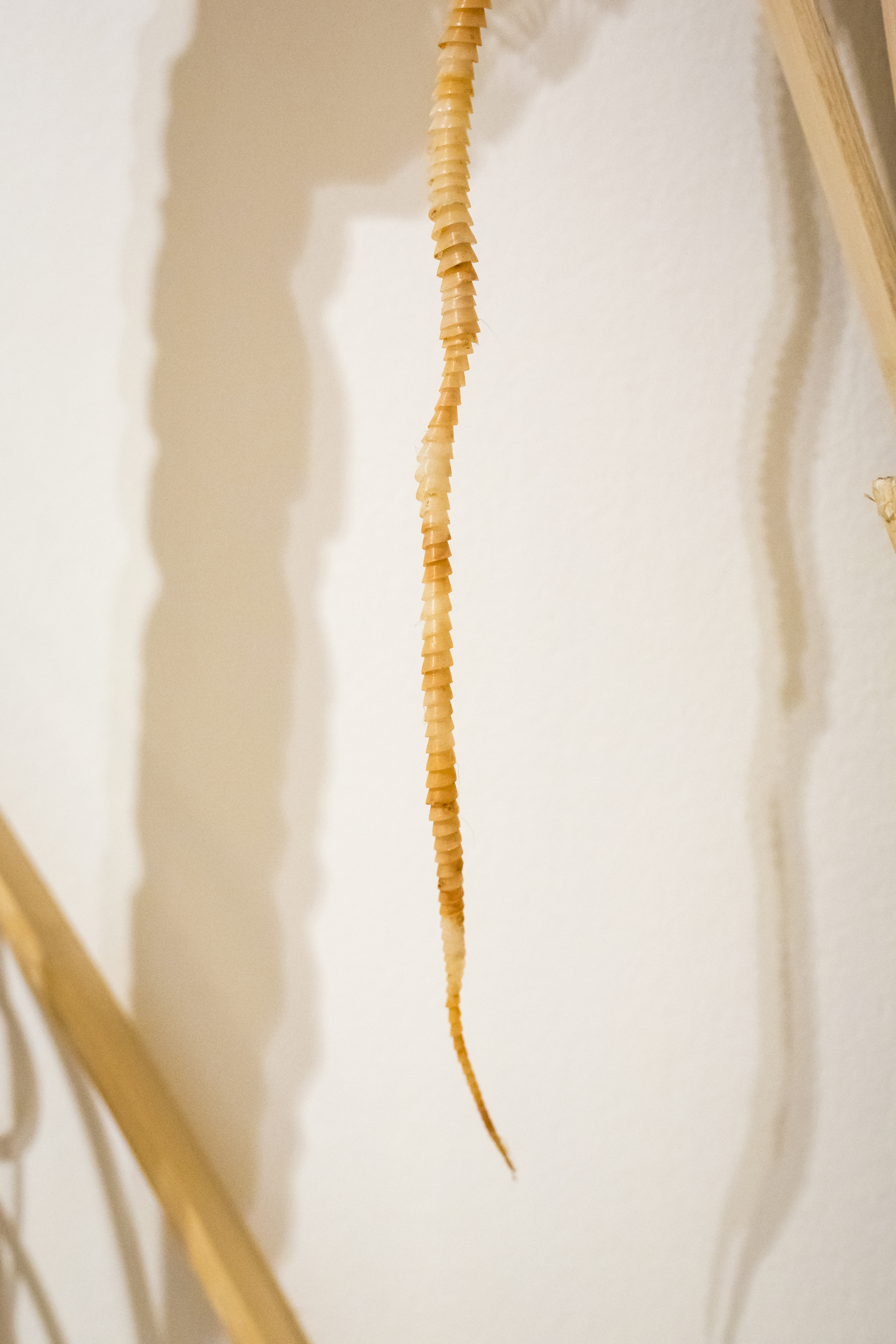 Because we’re only just starting to look at using seaweed as a material, these levels exist not only in the field of design. In Germany, there are no seaweed farms and the department of fisheries says, we don’t deal with that. The agricultural department says, it’s not on land, so it’s not us either. We have to be careful to incorporate enough of the scientific knowledge within our work so that it doesn’t become a gold farm with a big rush. But with the Department of Seaweed collective, we can raise exactly these questions.
Because we’re only just starting to look at using seaweed as a material, these levels exist not only in the field of design. In Germany, there are no seaweed farms and the department of fisheries says, we don’t deal with that. The agricultural department says, it’s not on land, so it’s not us either. We have to be careful to incorporate enough of the scientific knowledge within our work so that it doesn’t become a gold farm with a big rush. But with the Department of Seaweed collective, we can raise exactly these questions.
We’re currently part of the Submariner Network of people working in the Baltic areas on different areas of the blue economy. There are people doing things like making dye from red algae to replace the cochineal insects used to provide red pigments in makeup. The minute you are in these circles, and we’re the only designers in the network, you meet people who want to create things like face creams using seaweed, which is a really good place to be as you can learn, but also share expertise and knowledge.
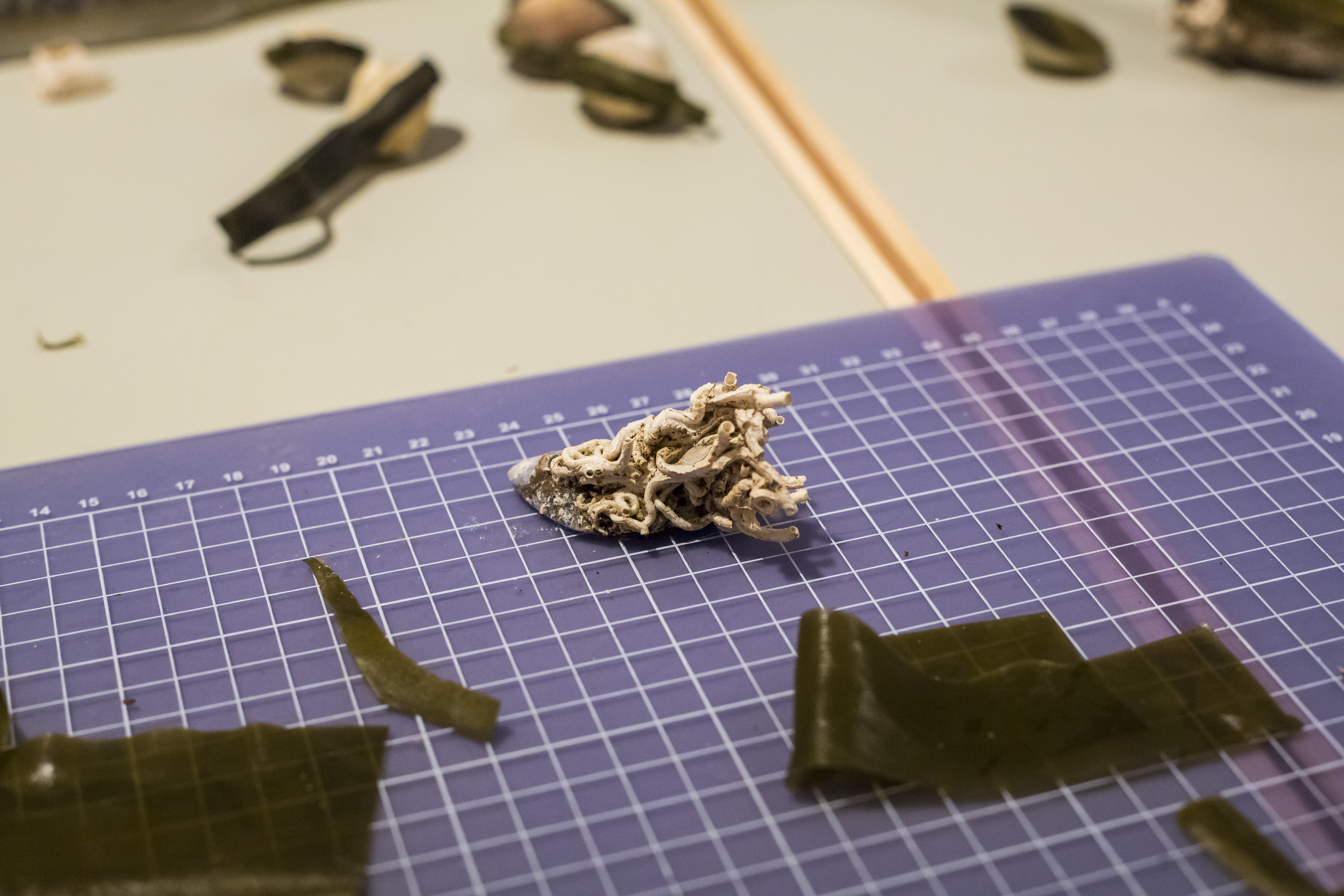 So, it’s not just about the creation of objects, but working across large systems and national governance?
So, it’s not just about the creation of objects, but working across large systems and national governance?
Exactly and that’s where it becomes exciting. And because we have relationships with galleries that are not normally so accessible to scientists or policy makers, we can help give them a public platform they don’t normally have. I think this is one way in which designers can really help.
Scientists can shout as much as they want, but they mainly do that in scientific papers read by a small minority of people. All the marine biologists were asking themselves how can we encourage people to act. In fact, one of them who works on ocean acidification, had been breading shrimps with differing levels of water acidification based on different future estimates. He then cooked the shrimp and served them to people in shopping malls who were horrified to experience for themselves the change in flavour of something they loved to eat. This is absolute design thinking. How can I make someone who lives in the middle of Sweden care about ocean acidification? So scientists are already starting to think like designers, but there’s still so much we can do together.
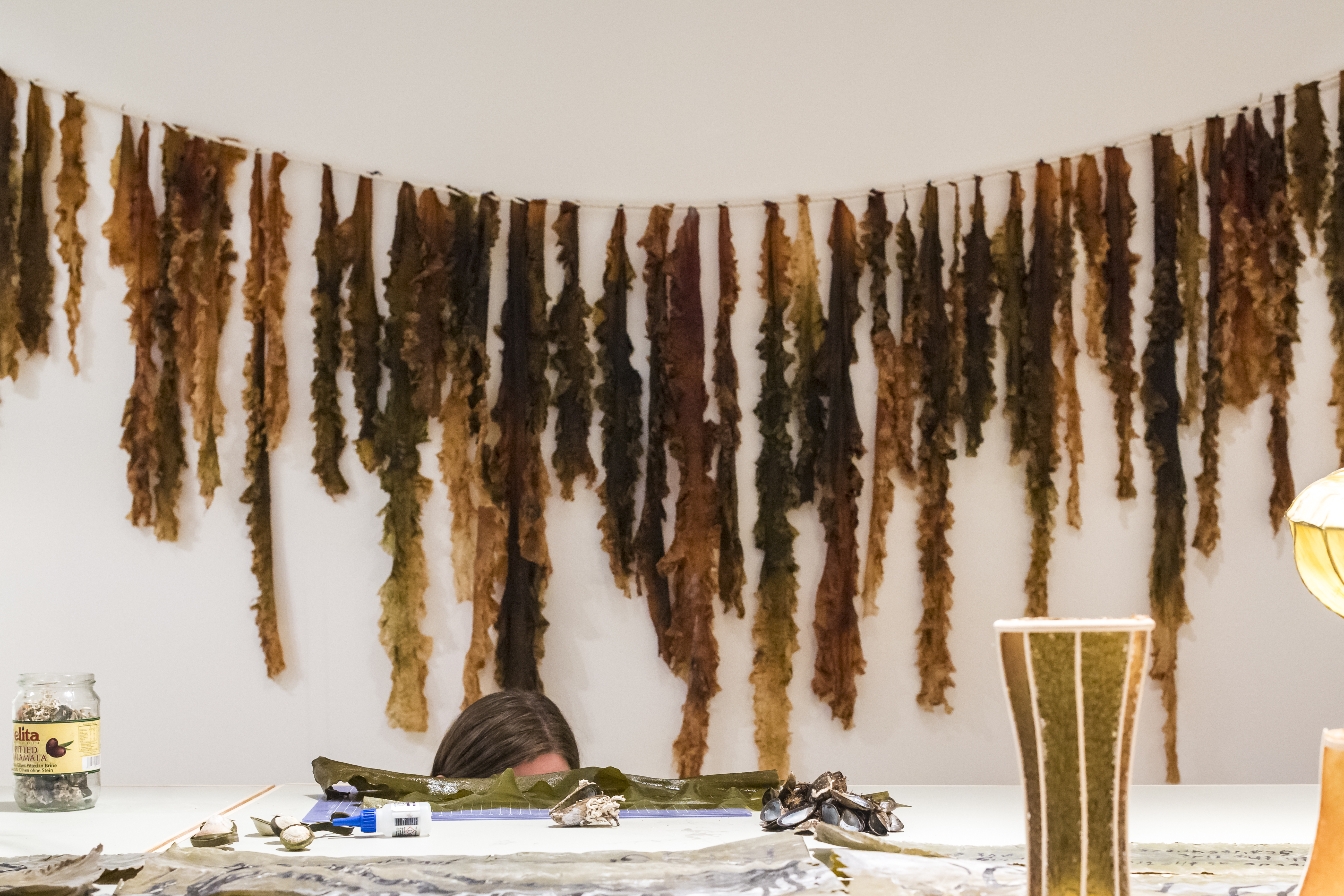 You moved here a year ago to take up the professorship in practice of contemporary design at Aalto. What attracted you to the position?
You moved here a year ago to take up the professorship in practice of contemporary design at Aalto. What attracted you to the position?
I visited Helsinki for the first time in 2012 for the World Design Capital. I went to the MA graduation show and was impressed by how the students wove theory and practice together and how clearly they communicated. When I saw the professorship advertised, I applied. I like how the programme combines conceptual, critical work and materiality—maybe Material Futures at Central Saint Martins does something similar, but it’s otherwise unique. And it’s a broad scope in terms of the students in that we have people coming from glass or ceramics or the Lahti Institute of Design who have this really artisanal approach and want something more conceptual.
Because Aalto is a big university it is quite unique in being able to offer connections with other departments. If you’re working on a project about sustainability, you can link with the chemistry department to precisely calculate the carbon footprint. Our designers can take advantage of knowledge from different domains and weave them together to make them understandable.
A lot has been happening since I arrived and it’s been very intense. Right now, I’m using teaching and learning frames to explore ways of learning with students. It’s not the case that I’m practising over there and then giving the students the benefit of my experience, but we’re actually working closely together. Teaching, practice and research is all coming together into one strand.
 I wanted to ask you about exactly that, actually. About how teaching feeds into your practice, so it’s interesting to hear you say that they’re starting to come together.
I wanted to ask you about exactly that, actually. About how teaching feeds into your practice, so it’s interesting to hear you say that they’re starting to come together.
It’s something that’s only really started happening since coming to Aalto. In Hamburg, I was teaching first year undergrad students. I’ve always loved teaching, but there it was quite separate to my research. But now, because I’m teaching MA and doctoral students, it has become much about investigating together.
And to come back to Critical Tide, this was really what we wanted the exhibition to feel like. We wanted to give the sense that there isn’t a clear distinction between us the curators and the visitors as exhibition consumers, but rather to make the visitor feel like they’ve been given the tools to think and research alongside us as a co-researcher.
Critical Tide in Design Museum until 27 Oct 2019.
Ending ceremony on Saturday 26 October.